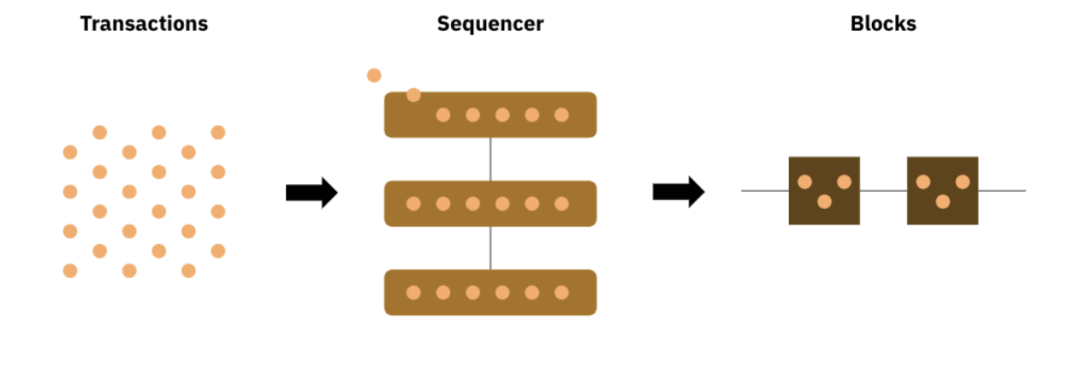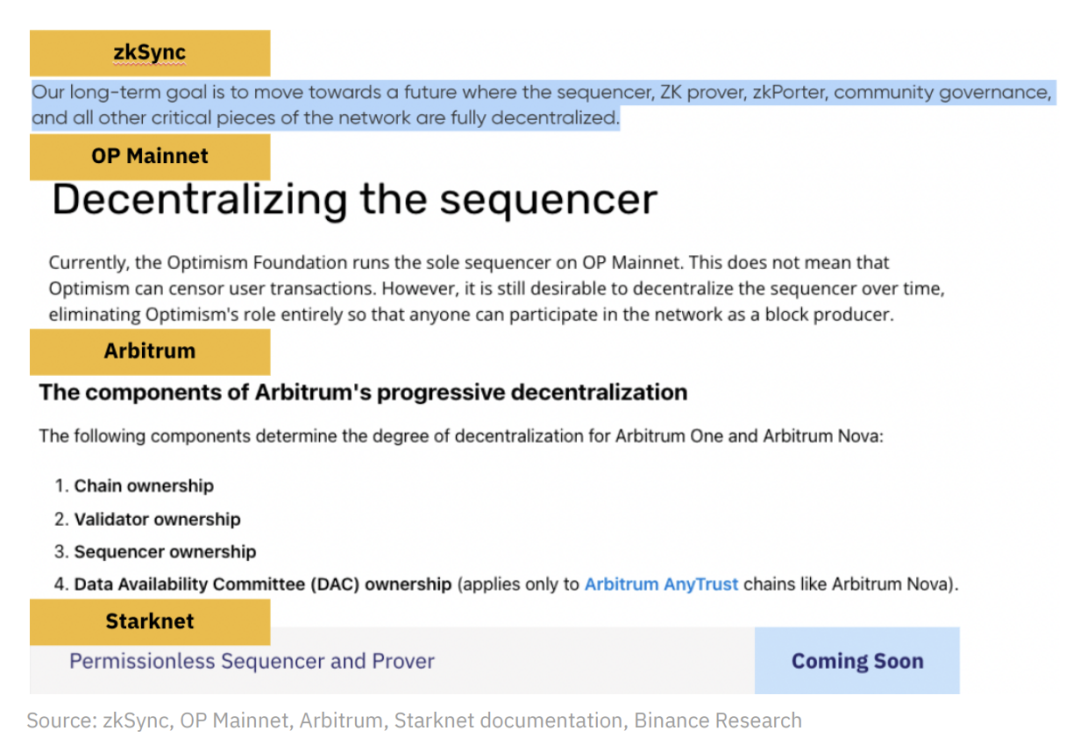Known as the crypto "cash cow," how much money has the sorter, which only does simple work, taken from us?
Author: Day, Plain Blockchain
In the Ethereum ecosystem, besides the well-known DApps, there are many tools and services that quietly extract value and "make a fortune in silence." With the increase of Ethereum L2s, the profitability of some L2s has gradually become known, leading to a growing interest in the concept of sequencers.
Sequencers, as the name suggests, are responsible for sorting the transactions submitted by users while extracting some fees from them. So the question arises: many people have raised concerns about centralized sequencers. How does this "making a fortune in silence" tool actually operate? What does the future hold? Today, let's explore the concepts related to sequencers together…
What is a Sequencer
Before understanding what a sequencer is, let's first look at the composition of transaction fees on Layer 2:
- Computation Fees: The fees required for executing smart contracts or computational operations on the L2 chain.
- Storage Fees: Fees associated with storing user data on L2, where users need to pay for the costs of data storage and management.
- Main Chain Transaction Fees: The fees for submitting the transaction results from the Rollup chain to the main chain.
In simple terms, the net income of a sequencer = total user spending on L2 transactions - total spending of L2 on L1 - sequencer operating costs. For more on Layer 2 profitability, you can refer to a previous article: zkSync quietly earned over $20 million in six months; how does Layer 2 profit?
On the other hand, the centralized sequencers operated by project teams have a certain degree of pricing power, which is one of the reasons why they can earn so much.
Sequencers, as the name implies, are responsible for sorting the received transactions. They are an important component of the L2 architecture, with the main task of sorting the transactions they receive. They receive transactions from users and sort them according to certain rules (currently generally sorted by gas price) to ensure that they are processed in an orderly manner. The sequencer will package these transactions into a block and then execute them, applying them to the blockchain. The purpose of this is to ensure the orderliness and reliability of transactions while improving the overall processing efficiency of the system.

Source: Binance Research
The working process of the sequencer helps ensure that transactions are processed and recorded on the blockchain without chaos or conflicts. It can handle a certain number of transactions and merge them into a block, thereby reducing the number of times transactions are written to the blockchain and improving overall performance and throughput.
In summary, sequencers play an important role in the L2 architecture, responsible for receiving, sorting, and executing transactions to ensure the orderliness and reliability of transactions while enhancing the system's processing efficiency.
Centralized vs. Decentralized Sequencers
Sequencers can be classified as centralized or decentralized. Currently, sequencers in L2 are centralized, but some believe that decentralized sequencers are also very important. Let's briefly look at the differences between the two.
Centralized Sequencers
Advantages: Fast transaction confirmation speed, providing a good user experience;
Disadvantages: Due to the existence of absolute power, they may exploit this power for profit, such as capturing MEV value by delaying or censoring user transactions. Additionally, centralized sequencers pose a risk of single points of failure; if a sequencer fails or is attacked, the entire system may be affected.
Decentralized Sequencers
Advantages: Decentralized sequencers delegate the power of sorting and confirming to multiple entities, using election or voting algorithms to select entities responsible for sorting, preventing the concentration of power in a single entity, thus increasing the system's security and resistance to attacks. Coupled with corresponding punishment mechanisms for malicious behavior, this can effectively regulate the actions of sequencers. Furthermore, since no single entity can unilaterally decide the order of transactions, it enhances the system's resistance to censorship.
Disadvantages: Decentralized sequencers may be slightly lacking in transaction confirmation speed and user experience, as they require an election or voting process involving multiple entities. Additionally, designing and implementing the election and punishment mechanisms for decentralized sequencers may require more technical and coordination efforts.
Current Situation
Currently, most major L2 solutions rely on centralized sequencers. This means that transaction sorting and confirmation on L2 are handled by a centralized entity or institution rather than being collectively decided by decentralized network participants. Although the validator set of Ethereum is decentralized, transactions on L2 are still influenced by this centralized sequencer.

Plans for decentralized sequencers in some mainstream L2s Source: Binance Research
Although some companies have recognized the importance of decentralized sequencers and included them in their development roadmaps, there has been no substantial progress in achieving truly decentralized sequencers so far. Some L2 solution providers have launched their own solutions, but their sequencers remain centralized.
In a competitive market, companies are more focused on improving core products and features rather than allocating resources to decentralizing sequencers. On the other hand, the significant profits that centralized sequencers can bring to companies also play a major role; according to Dune data, in terms of fee profits, from the beginning of October to now, Zksync has earned $1.6 million, Arbitrum $870,000, Base $600,000, and Optimism $510,000.
Shared Sequencers
One point to note is that the architecture of mainstream L2s may lead some unfamiliar individuals to think that sequencers and L2 are inseparable; however, this is not the case. L2 does not necessarily require a sequencer; it is merely a design choice made for better user experience. Therefore, extracting the sequencer functionality and handing it over to professionals is what we refer to as shared sequencers, a concept similar to modular blockchains, where functionalities are created as components that each Layer 2 can connect to.
Shared sequencers are decentralized sequencers available for all L2s to use, replacing the centralized sequencers currently used by mainstream L2s. Traditional L2 solutions rely on a single centralized entity to handle transaction sorting and confirmation, while shared sequencers establish a decentralized network of sorting nodes, allowing multiple L2s to share these nodes for transaction sorting.
Advantages:
1) In a shared sequencer, there is no longer a single centralized sequencer; instead, a new leader is elected to be responsible for sorting in each round, eliminating the issues that may arise from centralized sequencers. This can enhance the system's security and resistance to attacks, eliminate single points of failure, ensure the system's vitality, and reduce downtime.
2) Shared sequencers allow L2s to insert and remove sorting nodes from the network, providing healthy competition among various L2s. If a shared sequencer is unfair to users or excessively extracts value, users can easily switch to other better options.
3) Finally, since shared sequencers can sort transactions for multiple L2s simultaneously, cross-L2 atomic swaps become simpler, allowing users to operate funds more flexibly.
Disadvantages:
Shared sequencers also have some potential issues. One of them is the problem of value accumulation and incentive distribution. If a shared sequencer extracts too much value from L1 or unfairly accumulates MEV, it may lead to malicious behavior and incentive misalignment with the L1 chain.
Representative Projects:
Astria
The founder of Astria, Josh Bowen, has worked at Celestia, so he has certain resources related to Celestia. They will use Celestia's data availability layer and plan to test their shared sequencer by launching Astria EVM.
Espresso
Espresso's shared sequencer uses a custom consensus mechanism called HotShot, promising higher throughput and faster finality than other designs. Espresso has some collaboration with EigenLayer and plans to interact securely with Ethereum validators through restaking protocols like EigenLayer.
Flashbots
As a leader in the MEV space, Flashbots has also launched a related shared sequencer called SUAVE. Flashbots aims to manage the MEV market through SUAVE, decentralizing and minimizing MEV while working with other projects to address MEV issues.
Conclusion
Regarding whether shared sequencers can be realized, I personally think it deserves a question mark.
First, L2s are highly profitable in this area, with profits ranging from hundreds of thousands to millions of dollars per month (even more in bull markets). Why would they let you take a cut? Even if they manage to decentralize it, it is likely to be only superficially decentralized, with control remaining in the hands of the project team (or a small number of people).
Moreover, this industry is no longer in its infancy; it is very difficult for those without resources or background to get a project off the ground. Why would they integrate the leading L2s to use your sequencer? Furthermore, no institution in the industry has the resources to achieve this unless you support the ecosystem to create L2 or integrate your resources with a few L2s.
Additionally, the profits from sequencers can encourage L2 project teams to invest resources in supporting their own ecosystems. After all, the stronger the ecosystem, the higher the on-chain activity, and the more considerable the profits for sequencers.
Finally, Vitalik Buterin previously made a relative compromise regarding the future of Ethereum in his article "Endgame," shifting the concept of decentralization from block production to validation.













